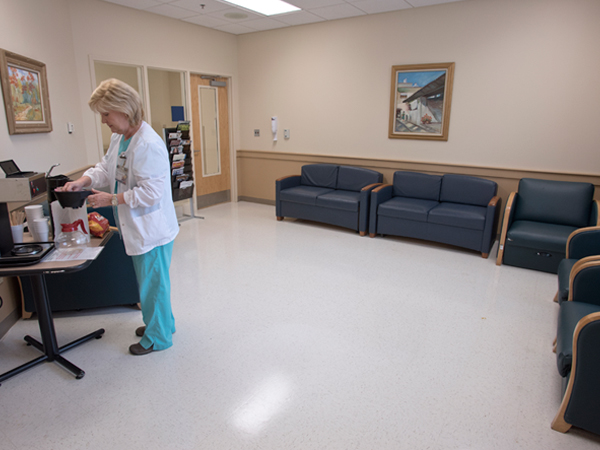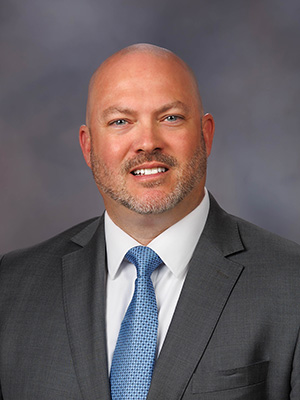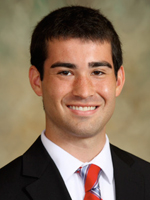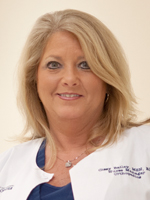Departure lounge new amenity for discharged patients

When inpatients in the University of Mississippi Medical Center are well enough to leave, they're ready to go home - but sometimes, their transportation is late or not yet arranged.
A new feature at the Medical Center, however, is giving many discharged patients a comfortable and convenient option as they wait. It's called a departure lounge, and the need for it arose from the large number of patients - about 40 percent - who wait two or more hours for their rides, said Cissy Lee, nurse manager for orthopaedics.
“About 48 percent of our patients reside outside a 50-mile radius,” Lee said. And when patients must wait for rides, their beds aren't available for those waiting to be admitted, whether for scheduled procedures or those being admitted through the Emergency Department. Patients leaving the Medical Center's post-anesthesia care unit and operating rooms also need placement in a bed, Lee said.

Jason Zimmerman, clinical director of the adult Emergency Department, said solutions are needed when it comes to availability of beds for new inpatients.
“With an Emergency Department or other areas such as the OR or ICU surging at or past capacity throughout the day, the inpatient units have entertained many options to create opportunities around earlier and more expedited discharges,” Zimmerman said. “The concept of a discharge lounge assists areas such as the ED to decrease length of stay and boarding times for admitted patients, while allowing for an area where discharged patients can comfortably wait for transportation to home.”
The lounge, open 10 a.m.-6:30 p.m. in room WC-577 on the fifth floor of University Hospital, is monitored by that floor's staff. It features comfy chairs, a telephone, televisions, magazines, refreshments and meals, and nearby restrooms. It has its own phone number: 601-815-8934.
Those who have used the lounge give it great reviews. “Once they are discharged, they are no longer patients. They're ready to go home, but we're committed to making them comfortable until their ride is here,” Lee said.

Since its opening in mid-October, the lounge's use is increasing, said hospital administration resident Daniel Enger, who with Lee did much of the front-end work to establish the lounge. A recently discharged patient compared being checked on in the lounge to being monitored in her hospital room, Lee said. “She was very happy to be there, and worked Word Find puzzles and watched TV while she waited.”
“When they leave UMMC, that's their last impression - how great the departure lounge is,” Enger said.
There are criteria for patients to qualify for the lounge, Lee said. They must be capable of walking with minimal assistance, be age 18 or over, and weigh less than 300 pounds. They must be waiting for transportation that already has been arranged, and must be capable of taking their medications.
Some discharged patients aren't eligible - for example, newborns and their mothers, and patients who are acutely ill and require transfer to another facility.

Fifth-floor staff maintain a manual log of patient arrivals and departure times and check regularly on those waiting, ensuring they receive meals, snacks, and any other assistance, Lee said. “And discharged patients can hit a call button in the lounge that will ring to the nurse's station for immediate response,” she said.
Family members can come to the lounge to get them, or if those discharged would like, they can go downstairs on their own when their ride arrives, Lee said. Patients sign themselves out of the lounge when they leave, helping staff track its use.
It's a win for both patients ready to go home, and patients being admitted, Zimmerman said. “Creating this capacity ultimately allows for better ED throughput,” he said.
“Decreased wait times for our patients allows for better quality of care and overall patient experience, while putting our care teams in a position to best utilize our resources to care for the multitude of critically ill patients that we have at any given time.”


